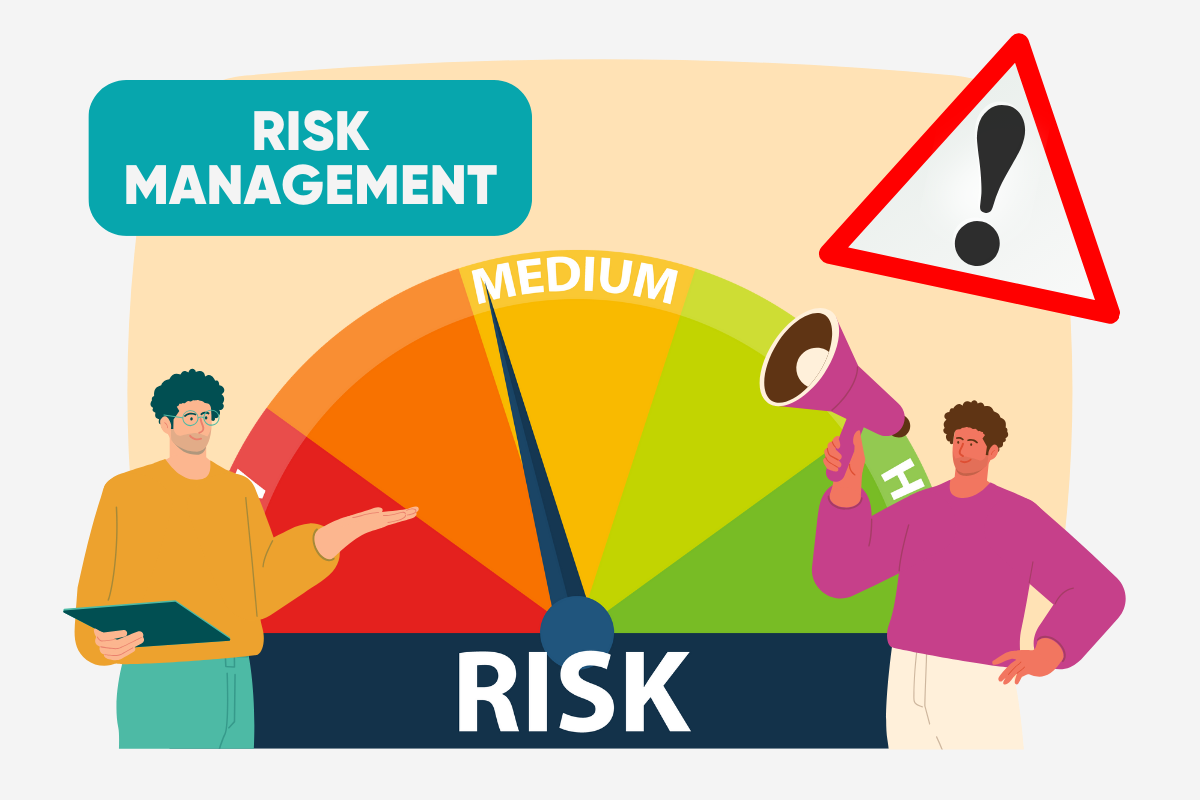
What is Risk Management?
Risk management is a system to identify, evaluate, and handle possible risks in a company. It aims to anticipate threats and manage risks before they become serious problems. These risks stem from various sources, including financial uncertainties, legal liabilities, technology issues, strategic management errors, accidents, etc.
Types of Risk Management
Financial Risk
Financial risk management oversees risks in the company's finances. These financial risks encompass market fluctuations, interest rates, and stock prices.Financial risk aims to identify problems and analyze the economic aspects of the startup that are prone to risk. Here are the things you should pay attention to in preparing for financial risk:
- Identify market risk, credit risk, liquidity risk, and operational risk
- Analyze the level of risk and its impact on company performance
- Strategy development, such as selection of financial instruments, risk consultation with financial experts, including stakeholders, such as shareholders and creditors, in the decision-making process
- Creating a financial crisis planOperational Risk
Operational risk is a type of risk that relates to losses from failures or unexpected events in operational processes. It includes human error, system or technology failure, startup failure to meet regulations, or unexpected external events.To create operational risk, startups must implement maximum and structured operational controls and create effective recovery procedures in the face of emergencies.
Here are the things you should pay attention to in preparing for operational risk:
- Identify risks involving human resources and business operations
- Categorize operational risks into specific categories, such as human, technology, and policy risks
- Evaluate and manage risks to vendors or business partners that can affect business operationCompliance Risk
Compliance risk is the potential loss when a startup fails to meet industry standards, operational policies, laws, or regulations. This risk can result in financial penalties or damage the startup's reputation.To create compliance risk, startups need to understand the applicable regulations, identify the potential failure of startups to meet rules, and implement procedures to meet these regulations.
Here are the things you should pay attention to in developing compliance risk:
- Identify all rules, laws, and SOPs (Standard of Procedure) that apply to the company
- Measuring the impact of compliance violations
- Monitor changes in policies and regulations
- Developing plans to mitigate violations of various types of rules.Legal Risk
Legal risk is associated with losses or consequences due to legal violations related to breach of contract, lawsuits, or regulatory changes. Legal risk can result in financial losses, such as fines and damages that can disrupt operations.Therefore, startups need legal risk management to mitigate legal losses by understanding applicable legal regulations, implementing risk management practices, and engaging legal consultants or experts to help startups manage risks.
Here are the things you should consider in developing legal risk management:
- Identify potential legal risks, such as legal violations, lawsuits, and regulatory changes
- Conducting internal and external legal audits
- Monitor the implementation of legal contracts that are still valid
- Utilize the services of legal consultants to provide assistance
Tips for developing risk management
Identifying Risks
Developing a comprehensive risk register is essential for any company or startup. By identifying as many risk factors as possible, you can quickly access the crucial information to make the right decisions in the face of challenges.The more detailed the risk register, the more thorough the steps can be taken to minimize the impact of these risks. Gathering other supporting information about the identified risk factors is also essential.
Establish clear procedures
Policies in implementing risk management must involve all company departments. Startups that have unclear procedures can increase the risk of confusion when risks come. Therefore, employees must understand their roles and responsibilities when implementing risk management.Prioritize communication and collaboration
Effective risk management requires communication and cooperation between departments. Encourage data sharing and utilize graphical reports to facilitate communication. By collaborating across departments, you can identify emerging risks and evaluate mitigation efforts, which will ultimately improve the company's adaptability.Create a report & feedback system
Quite often, existing systems are only run as a formality. When this happens, risk management will not run optimally. Create a structured process to escalate potential risks to the person in charge. This step is very important to ensure that potential risks can be identified before they become big problems.- Consult a risk management company
Many startups are not experienced in risk management. So, you can consult a company specializing in risk management. Utilize the expertise and experience of a risk management company to identify potential risks that you may face, as well as to create appropriate controls to manage the risks.
In an ever-evolving industry, it is easy for startups to get carried away with growth ambitions. However, it is essential to understand that it can become dangerous without risk management and safety. The importance of risk management can reduce the possibility of loss and strengthen a startup's position in a competitive market.*
